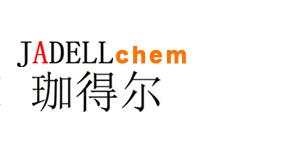Recombinant Human Monocyte Chemotactic Protein-3/CCL7是趋化因子和引诱剂,用于各种白细胞,包括单核细胞和嗜中性粒细胞
Synonyms
rHuMCP-3/CCL7; C-C motif chemokine 7; MCP3; SCYA6; SCYA7 ; 重组人单核细胞趋化蛋白-3/CCL7
Species
HumanSource
E. coli Accession
P80098 Gene ID
6354 Molecular Weight
Approximately 9.0 kDa AA Sequence
QPVGINTSTT CCYRFINKKI PKQRLESYRR TTSSHCPREA VIFKTKLDKE ICADPTQKWV QDFMKHLDKK TQTPKL Biological Activity
Full biological activity determined by a chemotaxis bioassay using human monocytes is in a concentration range of 10-100 ng/ml. Appearance
Lyophilized powder. Formulation
Lyophilized after extensive dialysis against 20 mM PB, pH 7.4, 150 mM NaCl. Endotoxin Level
<1 EU/μg, determined by LAL method. Reconstitution
Reconstitute the lyophilized recombinant Human Monocyte Chemotactic Protein-3/CCL7 (rHuMCP-3/CCL7) to 0.1-1.0 mg/mL using sterile distilled water or aqueous buffer containing 0.1% BSA. Storage & Stability
Lyophilized recombinant Human Monocyte Chemotactic Protein-3/CCL7 (rHuMCP-3/CCL7) is stored at -20°C. After reconstitution, it is stable at 4°C for 1 week or -20°C for longer. It is recommended to freeze aliquots at -20°C or -80°C for extended storage. Shipping
Room temperature in continental US; may vary elsewhere. Background
CCL7 is a chemotactic factor and attractant for various kinds of leukocytes, including monocytes and neutrophils. CCL7 is widely expressed in multiple cell types and can participate in anti-inflammatory responses through binding to its receptors to mediate the recruitment of immune cells. Abnormal CCL7 expression is associated with certain immune diseases. CCL7 alsoplays a pivotal role in tumorigenesis[1]. |



